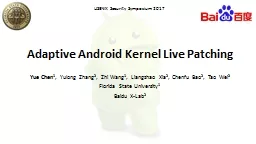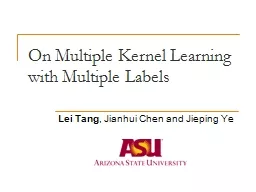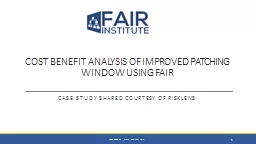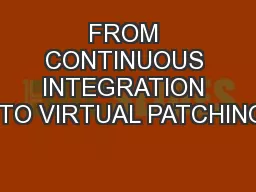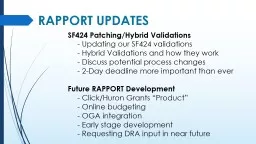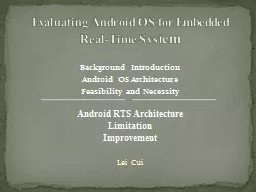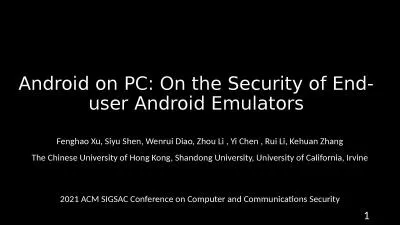PPT-Adaptive Android Kernel Live Patching
Author : jane-oiler | Published Date : 2018-03-14
Yue Chen 1 Yulong Zhang 2 Zhi Wang 1 Liangzhao Xia 2 Chenfu Bao 2 Tao Wei 2 Florida State University 1 Baidu XLab 2 USENIX Security Symposium 2017
Presentation Embed Code
Download Presentation
Download Presentation The PPT/PDF document "Adaptive Android Kernel Live Patching" is the property of its rightful owner. Permission is granted to download and print the materials on this website for personal, non-commercial use only, and to display it on your personal computer provided you do not modify the materials and that you retain all copyright notices contained in the materials. By downloading content from our website, you accept the terms of this agreement.
Adaptive Android Kernel Live Patching: Transcript
Download Rules Of Document
"Adaptive Android Kernel Live Patching"The content belongs to its owner. You may download and print it for personal use, without modification, and keep all copyright notices. By downloading, you agree to these terms.
Related Documents

